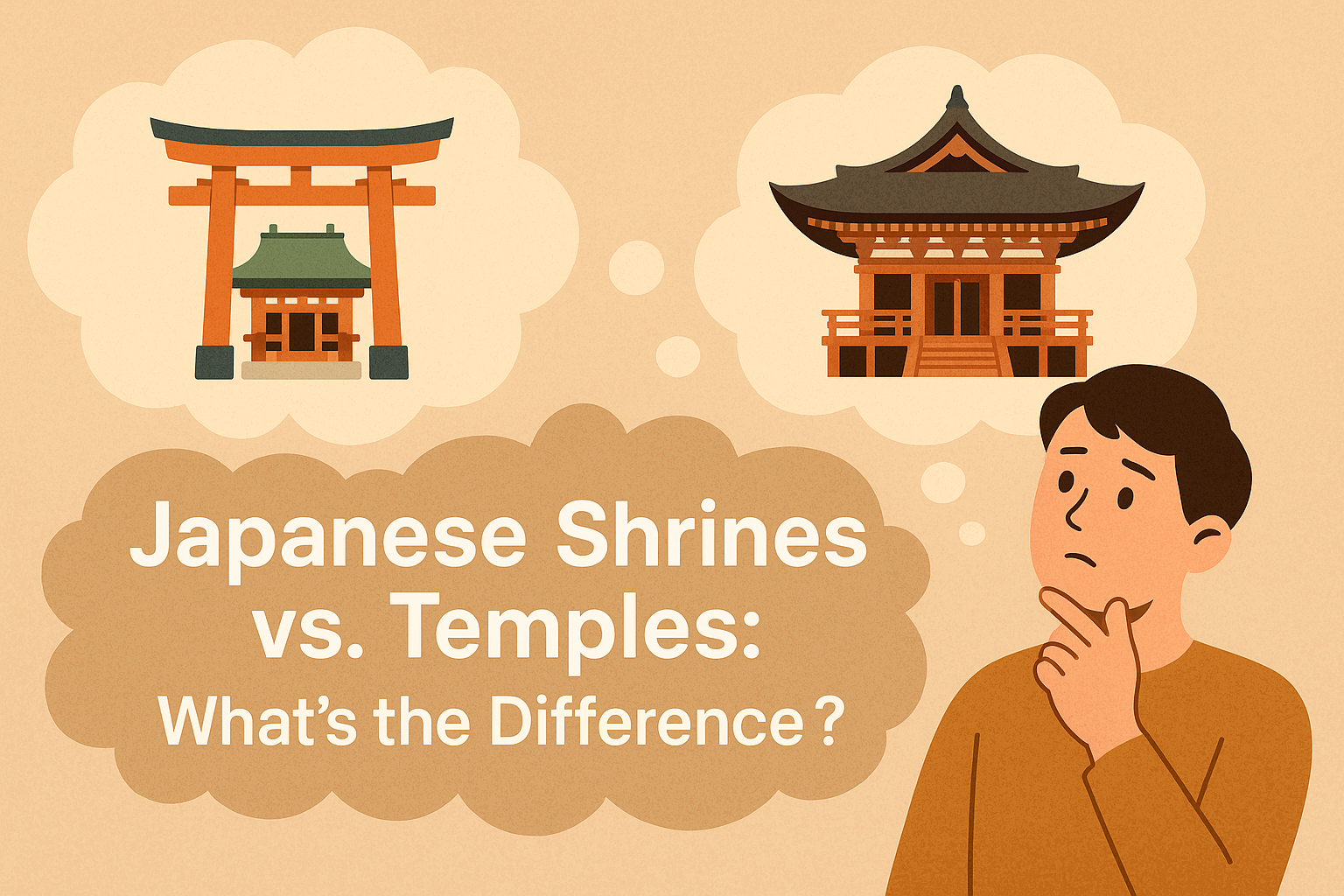👋 Introduction
If you’re planning a trip to Japan, you might hear about visiting “shrines” and “temples”—but what’s the difference? Although they may seem similar at first glance, shrines and temples come from completely different religious traditions. This guide will help you easily tell them apart and enjoy a more meaningful experience during your travels.
⛩ What is a Shinto Shrine?
Shrines are part of Shinto, Japan’s indigenous religion. Shinto focuses on the worship of kami—spirits associated with nature, ancestors, or specific places.
Common Features:
- Torii Gate: A large archway marking the entrance
- Shimenawa Rope: Sacred rope often hung at entrances
- Komainu: Guardian lion-dog statues
- Temizuya: A fountain for ritual cleansing
- Offerings & Bells: People offer coins, bow twice, clap twice, then bow once
Famous Shrines:
- Meiji Shrine (Tokyo)
- Fushimi Inari Taisha (Kyoto)
- Ise Jingu (Mie Prefecture)
Shrines usually feel open and connected to nature. They are peaceful places for quiet prayer and connection to the divine.
🛕 What is a Buddhist Temple?
Temples belong to Buddhism, which came to Japan from India through China and Korea. Temples are places to honor Buddha and reflect on teachings about life and enlightenment.
Common Features:
- Buddha Statues: Central figures in temples
- Pagodas: Tall, multi-tiered towers
- Incense Burners: Visitors offer incense to purify and show respect
- Main Halls: Where monks chant and visitors pray quietly
Famous Temples:
- Senso-ji Temple (Tokyo)
- Kinkaku-ji (Golden Pavilion in Kyoto)
- Todaiji Temple (Nara)
Temples usually have darker colors, wooden structures, and a more closed, spiritual atmosphere.
🔍 Key Differences at a Glance
| Shinto Shrine | Buddhist Temple |
|---|---|
| Shinto Religion | Buddhism |
| Worship of Kami | Worship of Buddha |
| Torii gates at entrance | Pagodas or statues |
| Clap and bow | Offer incense and bow silently |
| Bright red and white colors | Earth tones and gold |
| Priests in white robes | Monks in robes |
🙏 Worship Etiquette
At a Shrine:
- Bow before entering through the Torii gate.
- Clean your hands and mouth at the temizuya.
- At the offering box:
- Throw a coin
- Bow twice
- Clap twice
- Bow once more
At a Temple:
- Offer incense and bow respectfully.
- Do not clap.
- Keep your voice down and move slowly.
📌 Bonus Tip: At both shrines and temples, it’s good manners to take off your hat, avoid eating, and dress modestly. After finishing your visit, you can even place your trash or dishes near the counter if you’re at a temple with food stands—this is appreciated!
🎌 So… Which One Should You Visit?
- Shrine: If you want to experience traditional Japanese culture, festivals, and the spirit of nature
- Temple: If you’re drawn to peaceful atmospheres, Zen gardens, and historical architecture
Honestly, why not both? Each offers a unique piece of Japan’s spiritual and cultural puzzle.
🙌 Conclusion
Now that you know the key differences between shrines and temples, you’ll be able to appreciate each visit even more. Whether you’re walking through the torii of Meiji Shrine or lighting incense at Senso-ji, you’ll understand what makes each place meaningful.
➡️ Be sure to check out our related articles on Meiji Shrine and Senso-ji Temple for deeper travel tips!
Happy exploring! 🇯🇵✨



コメント